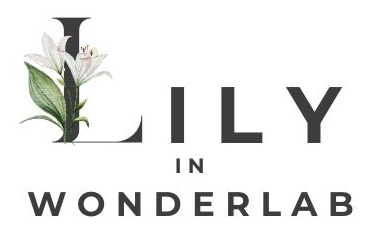How to preserve homemade cosmetics? Which cosmetic preservatives are suitable for natural handmade cosmetics?
Preservation methods allow us to preserve our homemade cosmetics for a long time. In this page I’ll only mentioned the ones that are allowed in clean skincare / natural cosmetics and that don’t contain ingredients such as parabens and phenoxyethanol. I’m also avoiding preservatives that require special care or are of dubious efficacy such as grapefruit seed extract and fermented radish root.
Storage and shelf life of DIY cosmetics
Although some methods theoretically allow a shelf life of several months (up to 6 or more), it is advisable to always keep an eye on our handmade cosmetics and to throw them away when we see that they begin to change color, texture or start to smell horrible. In some cases, it’s because they contain mold.
Remember to always keep them tightly closed and to pick them up with clean fingers. If possible, prefer dispenser containers that prevent you from having to touch the product each time, taking the right amount.
Airless containers ensure better preservation of the product because they limit contact with the air, slowing down oxidation and contamination.
Knowing how to preserve homemade cosmetics is important. Since we do not have a laboratory at our disposal and I’m of the opinion that DIY cosmetic should be humble and aware of its own limits, I always recommend avoiding preparing excessive doses of homemade cosmetics. Despite all the strategieswe can put in place, freshly made products are safer and more effective than those prepared many months ago.
It would be best to try to finish them within a month or at most 2, especially if they contain water. After a few weeks they start to lose much of their scent (especially if we use natural fragrances) and the ingredients they contain inexorably go through a process of oxidation and deterioration that can be harmful or make the cream almost empty of valid active ingredients.
In general, cosmetics containing water last less than those that are anhydrous (without water), such as oils, powders and body butters. Water is life and bacteria proliferate in this medium!
Natural handmade cosmetic preservation methods
Benzyl alcohol, Dehydroacetic acid
- Cosgard, also known as Isocida, Geogard or Microcare DB, contains the following ingredients: Benzyl alcohol, Dehydroacetic acid, aqua.
- Effective with a pH below 7. Water-soluble preservative among the most widely used in DIY cosmetics because it is reliable, easy to use and has good compatibility with other ingredients.
Cosgard is potentially allergenic, which is normal for preservatives and fragrances in general (and essential oils as well). However, it is an Eco Cert-approved product and safe when used in the recommended dosage. It has a almondy odor that is easily covered by the essential oils and fragrances we use in our cosmetics.
It is largerly used used in body and face lotions and gels. - Dosage: 0.6 % (16 drops per 100 g of product). Up to 1 percent if the formulation contains ingredients such as honey that could cause the product to deteriorate faster.
Glycerin
- Glycerin must be 4 times the water part to sequester water making it unavailable to bacteria. However, in high doses tends to make the product sticky, so this is not a suitable type of preservation for lotions. Check the almond scrub recipe to see how to preserve homemade cosmetics with glycerin.
Food grade alchool
- A 15% of food grade alcohol is sufficient to preserve a cosmetic. In many countries you'll be able to find it in the alcohol department of supermarkets.
Alcohol is not the best on the skin and it would be better to avoid using it every day. However, it can be useful for shrinking pores and to give a fresh effect to aftershaves and toners. It is recommended that formulations containing it be enriched with ingredients that counteract its degreasing effect. It is especially used in DIY perfumes.
Vodka
- 40% of Vodka is sufficient to preserve a cosmetic. If your Vodka has an alcohol content between 35 and 37%, use 45 g of Vodka per 100 g of product.
Vodka contains alcohol and water, so you need to use it in larger doses than alcohol. It has the same contraindications as alcohol.
Many use it in perfumes to avoid formulations with too much alcohol. This is not wrong, but according to top perfumers it should be avoided because, among other things, the presence of water tends to adversely affect the fragrance by causing it to deteriorate faster and it does not properly solubilize the essential oils (you will get a biphasic perfume).
Can I avoid to use a preservative method for my handmade cosmetics?
Anhydrous cosmetics do not contain water and therefore do not need preservatives. We are talking about bath bombs, solid body butters, solid cosmetic bars, lip balms and so on. Cold creams, which contain about the 20% water (here you can find an example), will last for 2-3 months or more without preservative. The only caution with oils and butters is to use 0.5 tocopherol (vitamin E) to prevent rancidity and thus prolong shelf life (it's NOT a preservative).
Ingredients that limit the shelf life and effectiveness of DIY cosmetics
Now you know the basic about how to preserve homemade cosmetics. However, keep in mind that some ingredients could limit the shelf life of some cosmetics containing water:
- Starches should never be added to creams and watery products because they are food for bacteria. Add them to anhydrous formulas only.
- Honey does the same, although to a lesser extent. If you want to include it in your formulas, it would be best to use 1% Cosgard.
- Infusions should be avoided in "long shelf life" cosmetics because they oxidize and lose their properties quickly. Unfortunately, there is no effective method for homemade cosmetics to avoid this process. Use them in DIY cosmetics to be used the same day, like masks.

